How to build an efficient prefabricated container camp overseas: prerequisites and best practices
Building a large-scale prefabricated container camp overseas is a complex and systematic project that requires adequate preparation and detailed planning. Here are some key conditions and steps to ensure the successful implementation of the project.
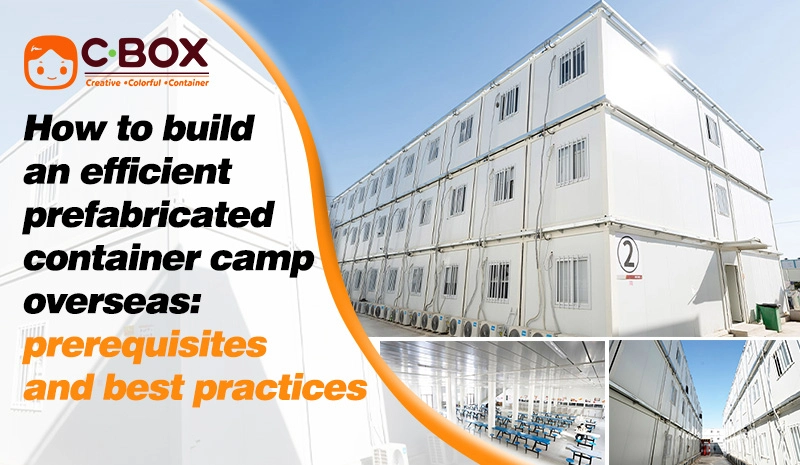
Compliance with regulations and permits:
To carry out a construction project in any country, you first need to understand and comply with local laws and regulations on temporary buildings. This includes land use permits, environmental protection regulations, building specifications, etc. Establish a good relationship with the local government and relevant departments to ensure that all necessary licenses and approvals have been obtained. Understand and prepare relevant documents in advance to avoid project delays due to incomplete procedures.
Site selection and land preparation:
Choosing a suitable camp location is crucial. Factors such as transportation convenience, geological conditions, water sources, and power supply need to be considered. Land preparation includes clearing the site, leveling the land, and infrastructure construction. When selecting a site, you also need to consider the risks of natural disasters such as floods and earthquakes to ensure the safety and stability of the camp.
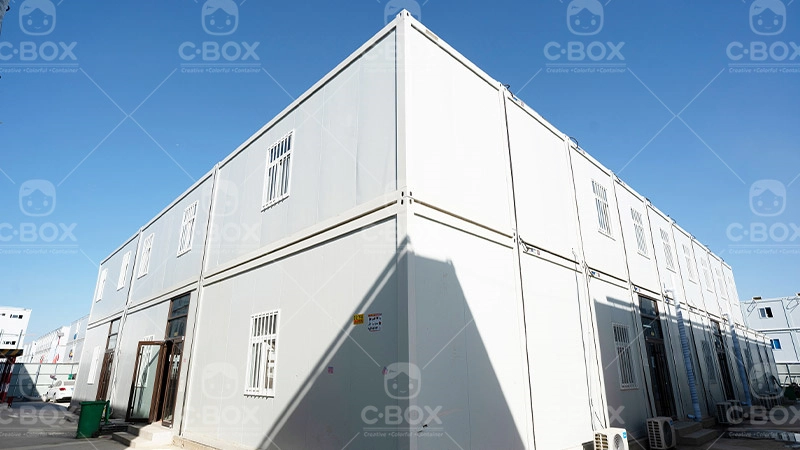
Design and procurement of prefabricated container houses:
The design of prefabricated container houses needs to be customized according to specific needs, including functional areas such as accommodation, office, sanitation, and catering. Choose a reputable prefabricated container house supplier to ensure product quality and delivery time. The transportation and installation of prefabricated container houses also require professional teams and equipment. The internal configuration of prefabricated container houses needs to consider comfort and practicality, such as air conditioning, lighting, furniture, etc.
Infrastructure construction:
A large engineering camp requires a complete infrastructure, including roads, power supply, water supply system, drainage system, communication facilities, etc. The construction of these infrastructures requires a professional engineering team and equipment. The power supply can consider the use of renewable energy such as solar energy to reduce the impact on the environment. The water supply system needs to ensure the safety of water quality, and the drainage system needs to effectively treat domestic sewage and rainwater.
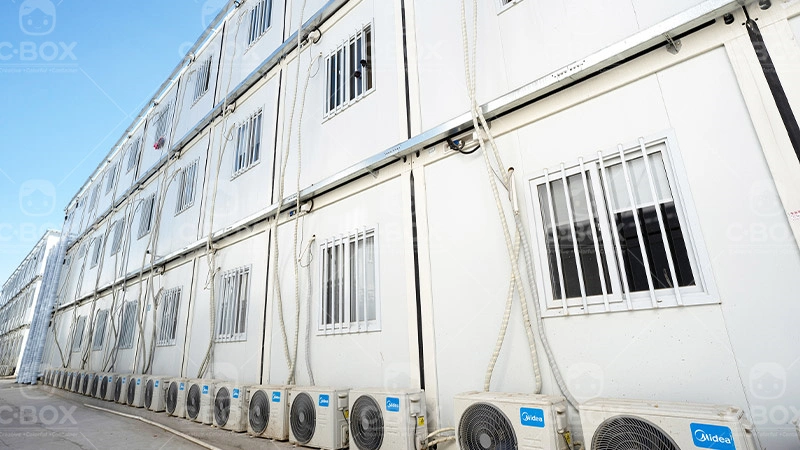
Living facilities and services:
Providing comfortable living facilities and services for workers and managers is an important factor in ensuring the smooth progress of the project. Prefabricated container houses can be flexibly configured to meet the needs of accommodation, catering, entertainment, medical care, etc. The camp also needs to be equipped with a canteen, a medical station, leisure and entertainment facilities, etc. The canteen needs to provide balanced meals, the medical station needs to be equipped with basic medicines and first aid equipment, and recreational facilities such as gyms and libraries can enrich the workers' spare time.
Safety and health management:
In the engineering camp, safety and health management is crucial. A detailed safety management plan needs to be formulated, including fire safety, first aid measures, and work injury treatment. Safety training and drills should be conducted regularly to ensure that all personnel understand and comply with safety regulations. The camp needs to be equipped with sufficient fire-fighting equipment, such as fire extinguishers, fire hydrants, etc., and emergency evacuation passages should be set up. First aid measures include training first aid personnel and setting up first aid stations.
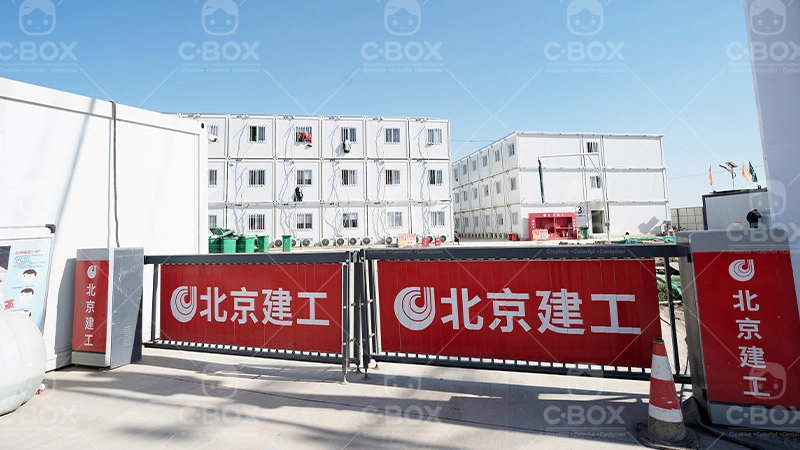
Supply of materials and equipment:
Ensuring the timely supply of construction materials and equipment is the guarantee for the smooth progress of the project. It is necessary to establish a reliable supply chain, select reputable suppliers, and ensure the quality and quantity of materials and equipment. Develop a detailed procurement plan to ensure that materials and equipment arrive on time and conduct strict quality inspections. Establish an inventory management system for materials and equipment to avoid affecting the construction progress due to out-of-stock.
Human resource management:
A large engineering prefabricated container camp requires a large number of workers and managers. It is necessary to formulate a detailed human resource plan, including recruitment, training, assessment, and remuneration. Establish a good teamwork atmosphere to ensure that all work is carried out efficiently. The skill level and work experience of workers should be considered during recruitment, and the training content includes safe operation, technical skills, etc. Establish an assessment and incentive mechanism to stimulate the work enthusiasm of workers.
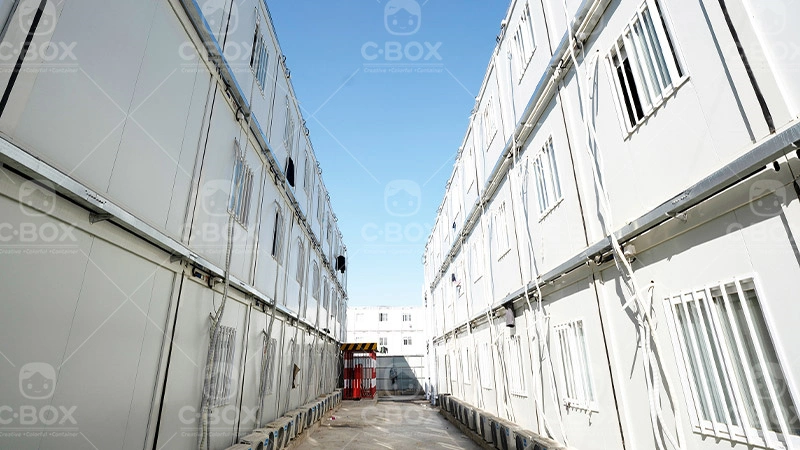
Environmental protection and sustainable development:
During the construction process, it is necessary to pay attention to environmental protection and take effective measures to reduce the impact on the environment. Formulate a sustainable development plan, make rational use of resources, and protect the ecological environment. Dust and noise prevention measures should be taken during the construction process to reduce the impact on the surrounding environment. Rationally use resources such as water and electricity to reduce waste. Establish a waste treatment system to classify construction waste and domestic garbage.
Emergency plans and risk management:
In overseas construction projects, various risks and emergencies are inevitable. It is necessary to formulate detailed emergency plans and risk management plans to respond to various emergencies in a timely manner to ensure the smooth progress of the project. Emergency plans include emergency response measures such as natural disasters, fires, and work-related injuries, and risk management plans include identifying, evaluating, and responding to various potential risks. Conduct risk assessments regularly and adjust response measures in a timely manner to ensure the safety and stability of the project.
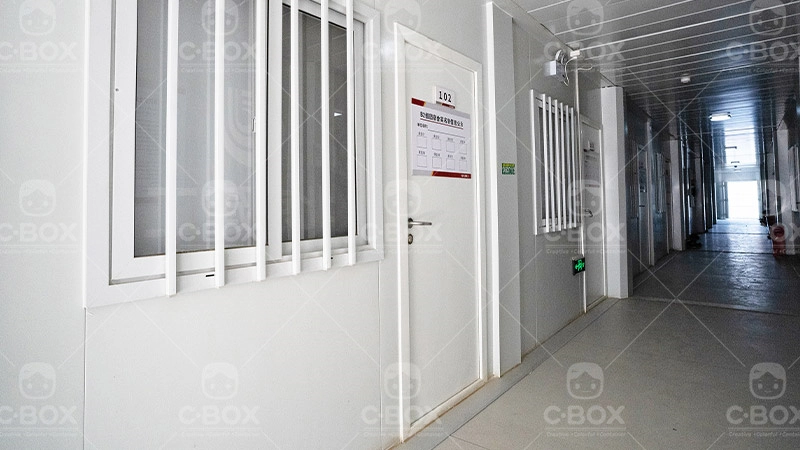
Cultural adaptation and communication:
In overseas construction projects, it is necessary to establish good relationships with local communities and workers. Understand local culture, language and customs, respect local traditions and habits, and avoid cultural conflicts. Local translators and consultants can be hired to help solve communication problems. Organize cultural exchange activities regularly to enhance mutual understanding and trust.
Financial management:
A large-scale engineering project requires good financial management. Develop a detailed budget and funding plan to ensure that the project is adequately funded. Establish a financial monitoring and auditing system to ensure the transparency and efficiency of the use of funds. Deal with financial problems in a timely manner to avoid project stagnation due to funding problems.

Project management and schedule control:
Large-scale engineering projects require scientific project management and schedule control. Develop a detailed project plan and schedule to reasonably arrange the time nodes of various tasks. Establish a project management team and clarify their respective responsibilities and tasks. Hold project progress meetings regularly to solve problems in a timely manner and ensure that the project proceeds as planned.
Quality control:
The quality of the engineering project is the key to the success of the project. Develop a detailed quality control plan to ensure the construction quality of each link. Establish a quality inspection and acceptance system to promptly discover and resolve quality problems. Hire professional quality monitoring personnel to supervise the entire construction process.
Information technology support:
Using modern information technology, the management and execution efficiency of the project can be improved. Establish a project management information system to realize the digital management of the project. Use remote monitoring technology to monitor the construction site in real time. Use big data and artificial intelligence technology to analyze and predict construction data and optimize the construction plan.
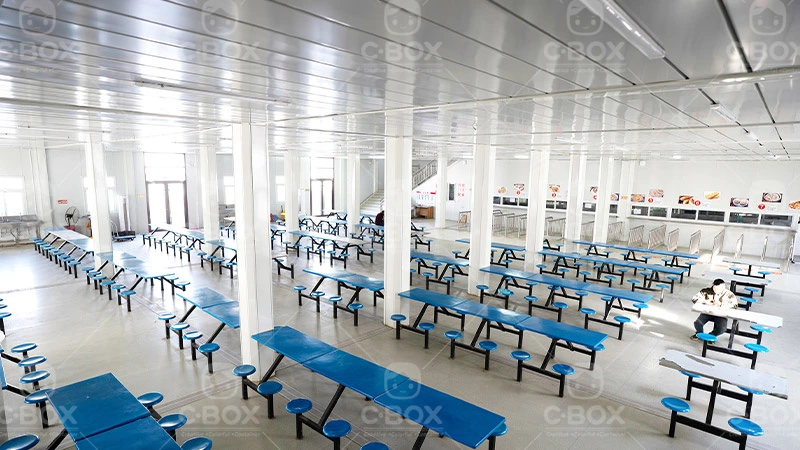
Building a large-scale engineering prefabricated container camp overseas requires comprehensive planning and meticulous preparation. Only when the law is compliant, the site is reasonable, the prefabricated container design and procurement are in place, the infrastructure is complete, the safety management is strict, the supply chain is smooth, the human resources are sufficient, the environmental protection and risk management are proper, the cultural adaptation and communication are good, the financial management is scientific, the project management and progress control are strict, the quality control is in place, and the information technology support is sufficient, can the successful implementation of the project be ensured. Through scientific management and efficient execution, the expected goals of the project can be finally achieved.








